What Is a Parts Washer? A Complete Guide for Beginners
When it comes to cleaning mechanical components, a regular bucket of soap and water just won’t cut it. That’s where parts washers come in. Whether you’re working in an auto repair shop, manufacturing facility, or even your own garage, understanding what is a parts washer and how it works can save you time, money, and a lot of manual labor.
In this guide, we’ll break down everything you need to know about parts washers from what they are, to the types available, and how to choose the right one for your needs.
What Is a Parts Washer?
A parts washer is a piece of industrial cleaning equipment designed to remove grease, oil, dirt, carbon, and other contaminants from mechanical parts and tools. It uses a combination of solvents, water-based detergents, pressure, and heat to clean parts quickly and efficiently.
Parts washers are commonly used in automotive shops, machine shops, and maintenance departments. However, they are also becoming popular with DIY mechanics and hobbyists.
Why Use a Parts Washer?
Cleaning parts manually is not only time-consuming but also inconsistent. A parts washer offers several advantages:
- Efficiency: Cleans parts faster and more thoroughly than hand scrubbing.
- Safety: Reduces contact with harmful chemicals.
- Cost-effective: Extends the life of parts and tools.
- Environmentally friendly: Many modern washers use water-based, biodegradable cleaning solutions.
Types of Parts Washers
There are several types of parts washers available, depending on your needs and the types of materials you work with.
1. Solvent-Based Parts Washers
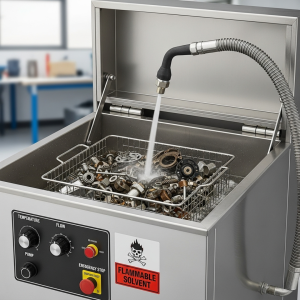
These use petroleum-based or chlorinated solvents to dissolve grease and grime. They are highly effective but require proper ventilation and safety precautions due to flammable or toxic fumes.
2. Water-Based (Aqueous) Parts Washers
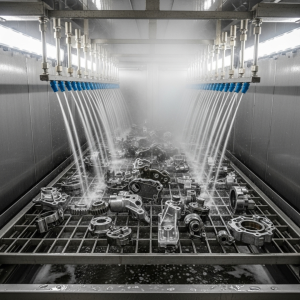
These use heated water mixed with detergents to clean parts. Aqueous parts washers are more environmentally friendly and safer for workers. They are suitable for most applications and have become the industry standard.
3. Spray Cabinet Washers
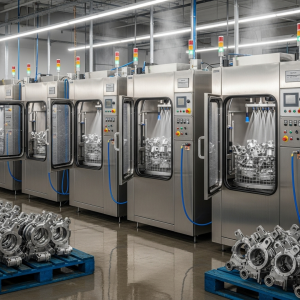
Designed for larger or heavily soiled parts, these washers use high-pressure jets of heated cleaning solution inside a closed cabinet. Just load the parts, close the door, and let the machine do the work.
4. Ultrasonic Parts Washers
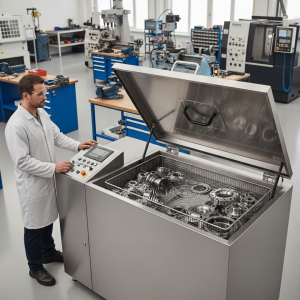
These high-tech washers use sound waves to create microscopic bubbles that scrub parts on a molecular level. Ultrasonic washers are ideal for delicate or complex components with hard-to-reach areas.
5. Benchtop Parts Washers
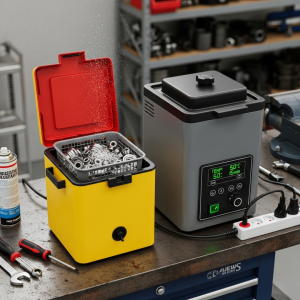
Compact and portable, benchtop units are great for small shops and personal garages. They typically use either a small pump and brush system or soak tanks for manual cleaning.
How Do Parts Washers Work?
While each type of washer functions differently, the basic process involves:
- Loading: Place the dirty part inside the washer.
- Cleaning: The machine applies solvent or water-based solution through spraying, soaking, or ultrasonic waves.
- Rinsing and Draining: Some washers rinse the part after cleaning; others allow you to remove it directly.
- Drying: Air-dry or use a towel, depending on the material and level of cleanliness required.
Choosing the Right Parts Washer
When selecting a parts washer, consider the following factors:
- Type of contaminants (oil, grease, paint, etc.)
- Size of the parts
- Material (metal, plastic, aluminum, etc.)
- Frequency of use
- Available space and budget
- Environmental regulations in your area
Understanding what is a parts washer is the first step toward improving your maintenance workflow, whether you’re in a high-volume workshop or a small personal garage. By choosing the right type of washer for your specific needs, you can boost efficiency, enhance safety, and extend the life of your equipment. For high-quality, reliable parts washers and industrial cleaning solutions, trust Can Star Industrial your partner in precision cleaning.
